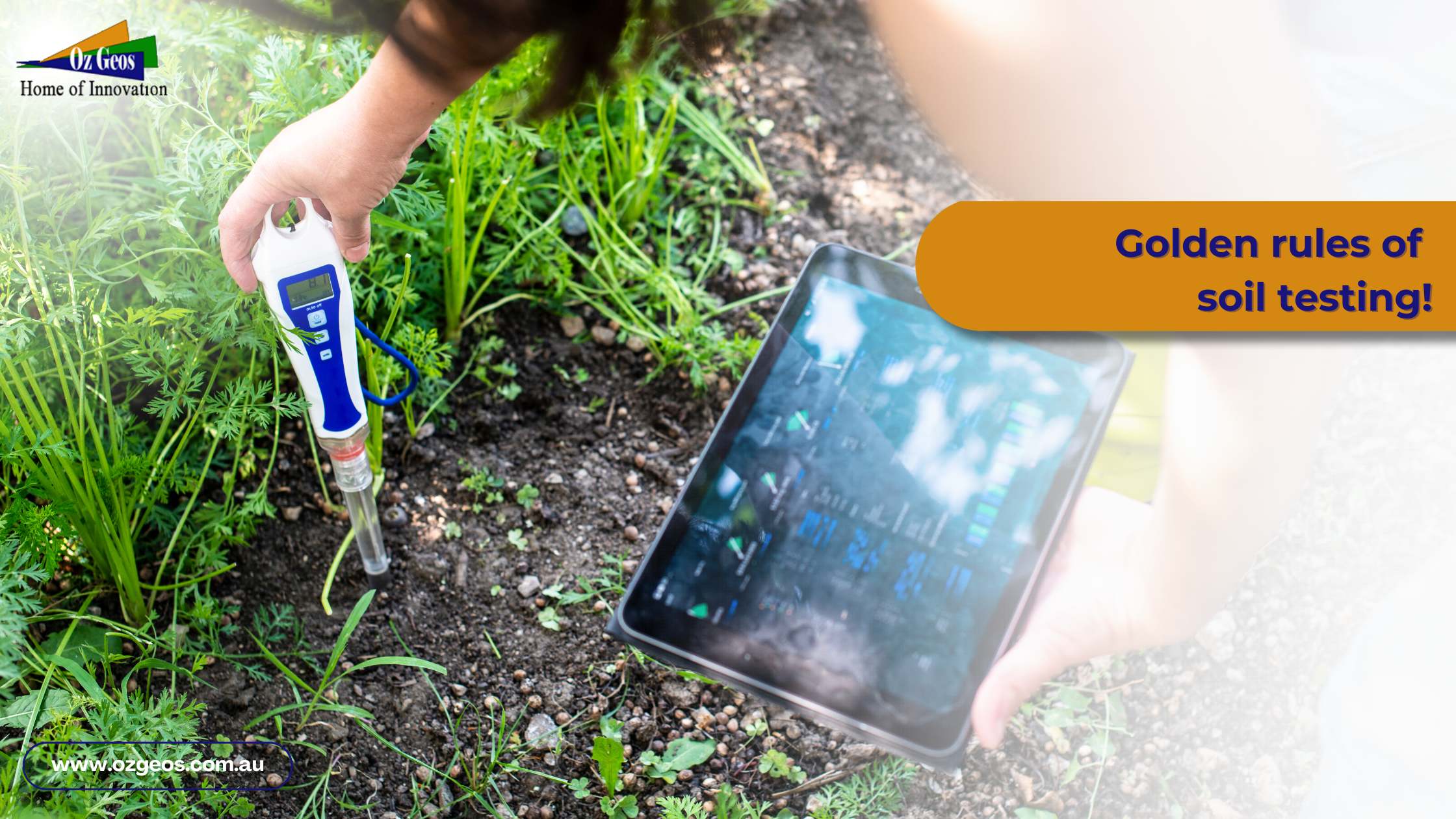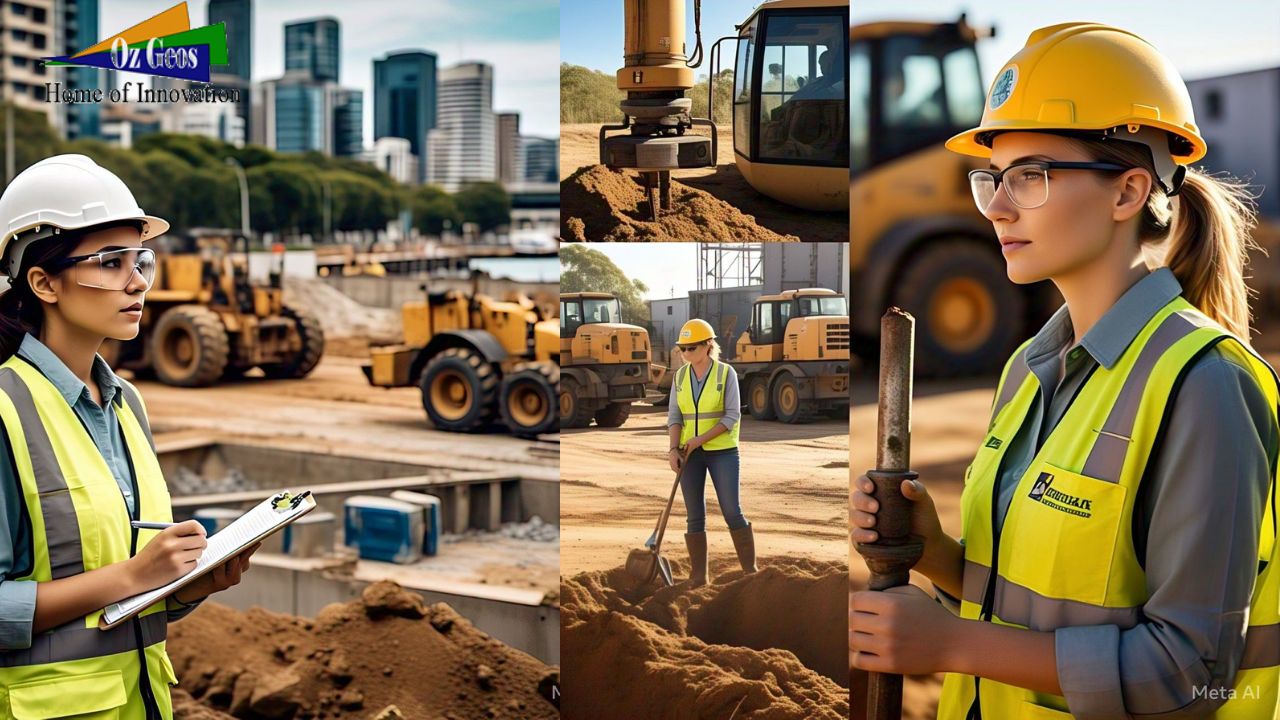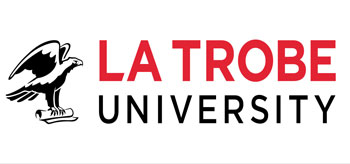Golden rules of soil testing!
It is essential to evaluate the soil condition and its appropriateness for construction, before moving forward with a geotechnical engineering project. The soil needs to be strong enough to handle the weight of the construction. so, it is very important to assess the earth condition of the site before initiating any structure.
- Primary purpose: In OzGeos, the key objective of soil testing encompasses the capacity of the soil for carrying, reorganization, and compression, including other properties of soil.
- Purpose of soil testing: The first rule of soil testing is to understand its purpose. In geotechnical engineering, soil testing determines properties such as strength, density, compaction, permeability, and moisture content. These characteristics are vital for designing foundations, assessing risks, and ensuring long-term stability. As emphasized by OzGeos knowing why you are conducting tests and the specific data you require will guide you in selecting the appropriate testing methods and accurately interpreting the results.
- Appropriate Testing Methods: There are plenty of methods available, to test the soil. choosing the right method is important. The selection is based on a variety of factors, like the nature of the soil, the specification of the project, and the information required.
Common techniques are the standard penetration Test(spt), cone Penetration Test(cpt), and laboratory tests such as analysis of grain size and Atterberg Limits.
OzGeos advises consulting with a geotechnical engineer to ensure the exact results for your project. This can save time and money while giving accurate results. - Moisture content test on soil: The moisture content test is a fundamental analysis conducted on soil samples. This determines the amount of water present in them. It helps in understanding soil’s appropriateness for various applications. Those are construction, agriculture, and geotechnical engineering. The soil sample is dried and the weight loss due to the same is measured. This helps in calculating the moisture content and is used for further analysis.
- Specific Gravity Test on Soil: The specific gravity Test is a crucial Process. It was performed on soil samples to determine the density of the soil particles relative to water. It aids in determining the soil’s compression, permeability, and ratio of voids. By contrasting the weight of the soil sample in air and water, the specific gravity, or density can be determined for soil classification and engineering calculations.
- Dry density test on soil: The dry density test is a crucial examination. It was conducted on soil samples to determine their compaction. This test helps in understanding the soil’s suitability for construction projects, evaluating its durability and stability, and finding the best moisture content for compression.
- Atterberg Limits Test on Soil: Atterberg limits test is a vital examination conducted on soil samples. It helps to identify plasticity and moisture content qualities. This test entails the measurement of the soil’s fluid, plastic, and shrink limitations. The research results of these assessments yield significant insights into the soil’s behaviour, such as its capacity to retain moisture and its tendency to deform, which are instrumental in the classification of soil and construction design.
- Continuous Monitoring and Testing: Soil testing should not be viewed as a single event. Ongoing assessment and analysis are vital, particularly for extensive or intricate projects. During the construction phase, variations in soil conditions may change due to excavation, dewatering, or various other operations. OzGeos encourages regular testing and monitoring to verify that soil characteristics remain within permitted thresholds and to detect any potential risks at an early stage. This forward-thinking strategy can prevent costly setbacks and enhance both the safety and overall success of the project.
- Conclusion: Soil testing is an important aspect of geotechnical engineering that necessitates careful attention to detail and compliance with best practices. By adhering to these fundamental principles provided by OzGeos engineers and project managers can guarantee that they acquire precise and dependable information to come up with knowledgeable selections. Remember, a solid foundation starts with comprehending the ground beneath your feet.
Visit OzGeos for more comprehensive understanding and expert advice on soil testing and geotechnical engineering.































